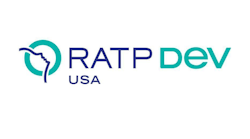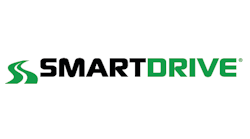RATP Dev USA: Managing Safety Through Deployment of SmartDrive Systems
SmartDrive Systems and RATP Dev USA recently announced that RATP Dev USA deployed the SmartDrive program across a number of its transportation systems across the United States. The SmartDrive program was added to enhance RATP's drive2zero safety management system. Mike Anderson, vice president safety & security at RATP Dev USA came to the organization with experience with safety management systems. Anderson said that RATP designed its safety management system around what he was really familiar with.
"We identified five areas of what make up our trademark drive2zero solution. That is our trademark vision of safety solutions. Those safety solutions include safety management system, which is all of the standards, processes, procedures and documentation to keep the safety management system standard," said Anderson. "We have software and technology to support the safety management system in terms of data collection, returns and auditing and risk assessment. We have an incident notification system, learning management system. The last is the vehicle telematics, and the SmartDrive relationship fills the role of the fifth component."
SmartDrive was selected after there was a review of a number of different systems.
"SmartDrive really provides gathering data to conduct a health check of the controls that are in place," said Anderson. "By using SmartDrive in a safety management system defiantly falls within the safety management assurance."
The addition of SmartDrive fully fits within RATP's "culture of safety". It offers a more in-depth look into how vehicles are operated in the instance of an event — or when a driver makes unexpected stops or maneuvers.
"When an event occurs outside of the view, SmartDrive views and records what happened. Some telematics will show an increased heart rate, but not why it occurred. SmartDrive takes a photo of ten seconds before and ten seconds after an event," explained Anderson. The SmartDrive system shows both acceleration and deceleration of the vehicle. "Say you were following one second behind instead of four and you had to stop fast because that vehicle stopped for some reason. That risk score is assigned to an operator that is also assigned to a location so as an operator you can see how you’re doing compared to other operators."
What this offers is that it provides a greater opportunity to coach operators to improve their safety practices. Operators, supervisors and managers alike are able to work together to improve system-wide safety.
"What we do when we explain to the operators and the unions that we work with, is that it’s really there to be an environment of learning and coaching. We have a culture here that we call 'just culture', that says people make mistake and they can learn from those mistakes when they are not intentional," said Anderson. "That’s what SmartDrive does, it really is a tool where to measure driver’s behaviors of our operators so we can have an opportunity to coach."
In addition to providing coaching opportunities, the SmartDrive program records in a fashion that if an operator was wrongly accused or was unsure of what transpired, the program offers that necessary evidence. It also allows the operator to be able to take a look back at an incident.
"There was an instance where an operator was apparently in a hurry and went through a cross walk without yielding to a pedestrian. At first I think there was a little of defensiveness ‘it’s the area, it’s the university, I don’t know why they don’t look’. But we sat down and had a conversation and showed the video of where the pedestrian steps out into the crosswalk and talked about what could have happened if the operator hadn’t stopped. The defensiveness dropped," explained Anderson. "That’s what we’re trying to do, it’s a proactive way of addressing those behaviors and actions of those operators."



